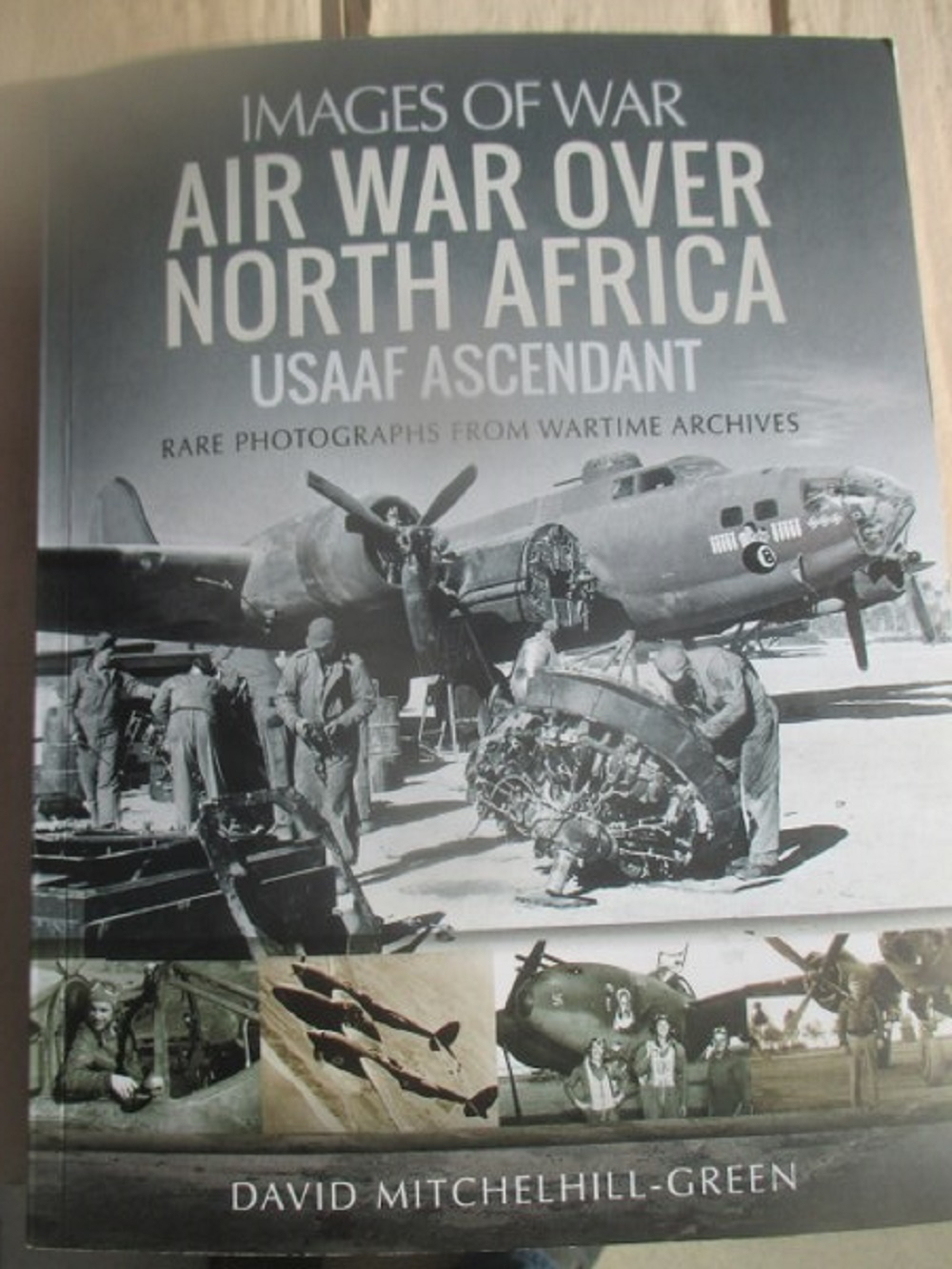Images of War: Air War Over North Africa, USAAF Ascendant.
At the beginning of World War II in Europe, the British were faced with the threat to Egypt and the Suez Canal by the Italians in North Africa. With the fall of France in 1940, the Vichy Government control of the western end of the North African coastline put the British position in further jeopardy. The Italians sent their forces into Egypt, where they were soundly beaten by the British, losing thousands of prisoners of war in the process. Hitler felt forced to aid his Italian allies, and sent General Rommel’s forces to North Africa. After the Japanese attack on Pearl Harbor, Allied leaders set up a strategy to evict the Axis Powers from North Africa, and starting in early 1942, American forces began preparing for “Operation Torch”, the invasion of Vichy French controlled Morocco and Algeria, and in November, 1942, Allied forces, mainly American, began landing in North Africa. Before long, the Vichy French in the area saw the handwriting on the wall, and nearly all switched to the Allied side. The Germans rushed an army, under Rommel, to defend against the Americans and the British, but although it was a close call, the Americans were able to establish sufficient land and air forces to eventually force the Germans and Italians to surrender, and the Allies began striking back by invading Sicily in June, 1943.
A major part of this effort was the establishment of powerful Allied air forces in the region, consisting mainly of fighter, light bombers, heavy bombers, and reconnaissance units. The area was unbelievably primitive, with the main population being Arab tribesmen, and there were few towns, little road facilities, and almost no suitable airfields. One U.S. soldier described the place as “Texas with Arabs”. The Allies had to build their own airfields, but living conditions were still in the Stone Age, and aircraft maintenance and upkeep was a serious problem, eventually solved through the use of C-47 transport planes. Although the Germans and Italians attempted to use air transport to resupply their units, Allied control of the air resulted in very heavy losses, and by 1943, it was all over, the war having continued on to the European continent. One reason for the Allied success was the German and Italian failure to take the island of Malta, which provided a base for bombers, fighters, and reconnaissance aircraft for the central Mediterranean area. But that is another story.
The Book
The book is essentially a photographic tour of wartime North Africa, using photographs taken by official and unofficial photographers. Lots of them are shots saying “Hey, look at me in front of my airplane in North Africa”, but many show the actual equipment and people doing the things they needed to do to get the war over with. There is a lot of coverage of the maintenance and logistical end of things, which would be extremely useful for anyone wanting to create a diorama. The book begins with some photos taken of abandoned German and Italian aircraft, with a few curious identifications, with explanations about why the planes were left there. Then the American fighter units are discussed, with many photos of particular pilots and commanding officers, many being shots of the actual presentation of various medals. There are some good photos of P-40’s and P-38’s, with lesser coverage of P-47’s and P-51’s. In addition, the author shows several pictures of Hollywood stars who toured the battle areas giving shows for the USO, a real morale booster. Frances Langford, who toured with Bob Hope, must have looked pretty good to the troops who were living in mid spattered tents at the time.
Following the fighters, the essential photo reconnaissance units are covered, with a lot of material on Lockheed F-4 and F-5’s that I hadn’t seen before. A lot of material covers the use of the B-25 and B-26 medium bombers, and next, the B-17’s and B-24’s that had already started to fly missions over German occupied areas in southern Europe. The final chapter deals with airfields and conditions under which the Americans had to live. Many photographs show what the lives of the men were like. After reading this book, you will have a much different perspective about what our people endured during that part of World War II. Each photograph is explained thoroughly, and the pictures are of exceptionally good quality.
Features
The book is mainly a photographic coverage of the war in North Africa. Everything is in black and white, but the author has made a successful attempt to show not only the people, but the equipment used during this time.
Kit Information
There is no specific kit information, but there are many photos that show enough information to provide a resource for model builders.
Recommendation
I think we have almost a surplus of reference material aimed exclusively at modelers wishing to build models of specific aircraft. This book does something different. When finished, you will have a much better idea of what the war was about, and what our people had to go through to win it. In the long run, this is what we need to be reading, as it tells the real story. This book is a very good start in that direction. Highly recommended.







Comments
Add new comment
This site is protected by reCAPTCHA and the Google Privacy Policy and Terms of Service apply.
Similar Reviews